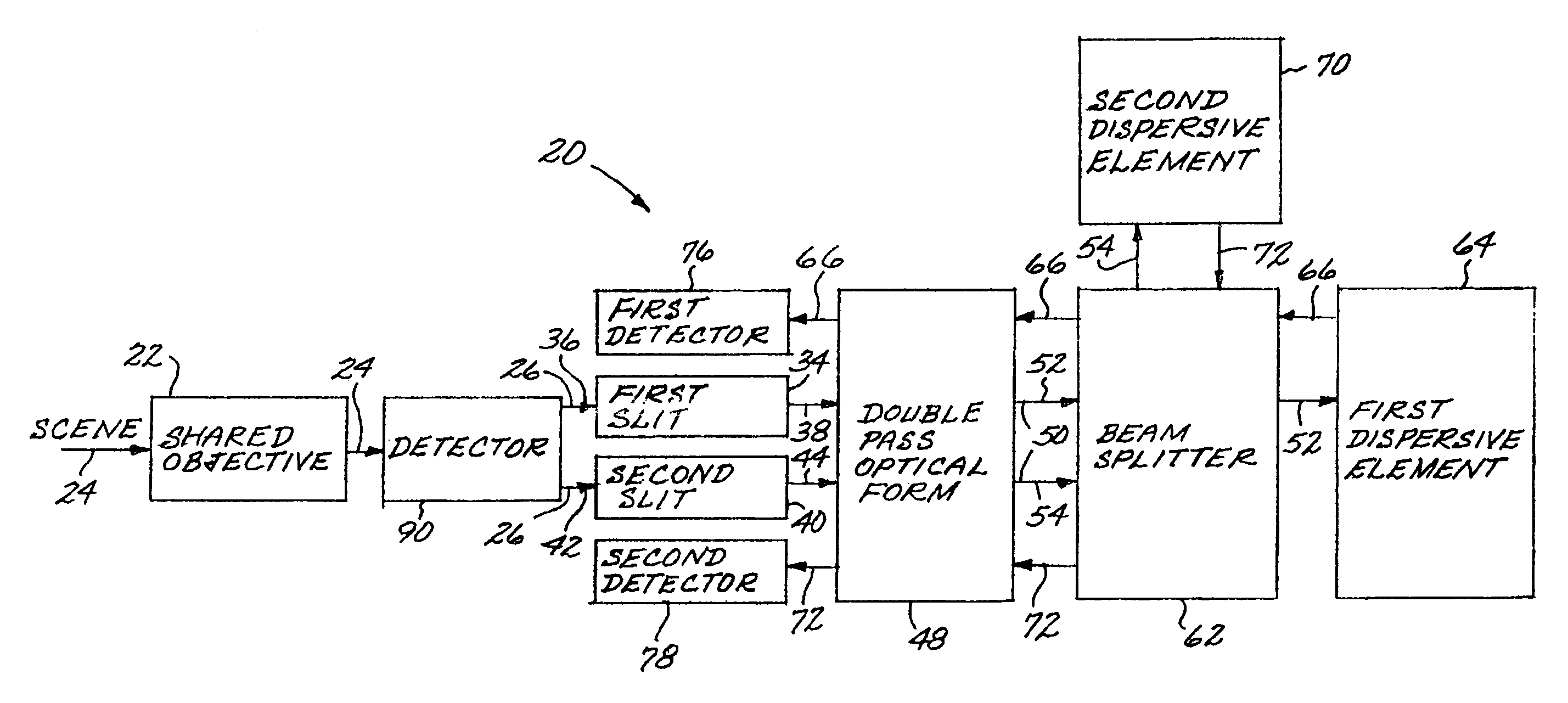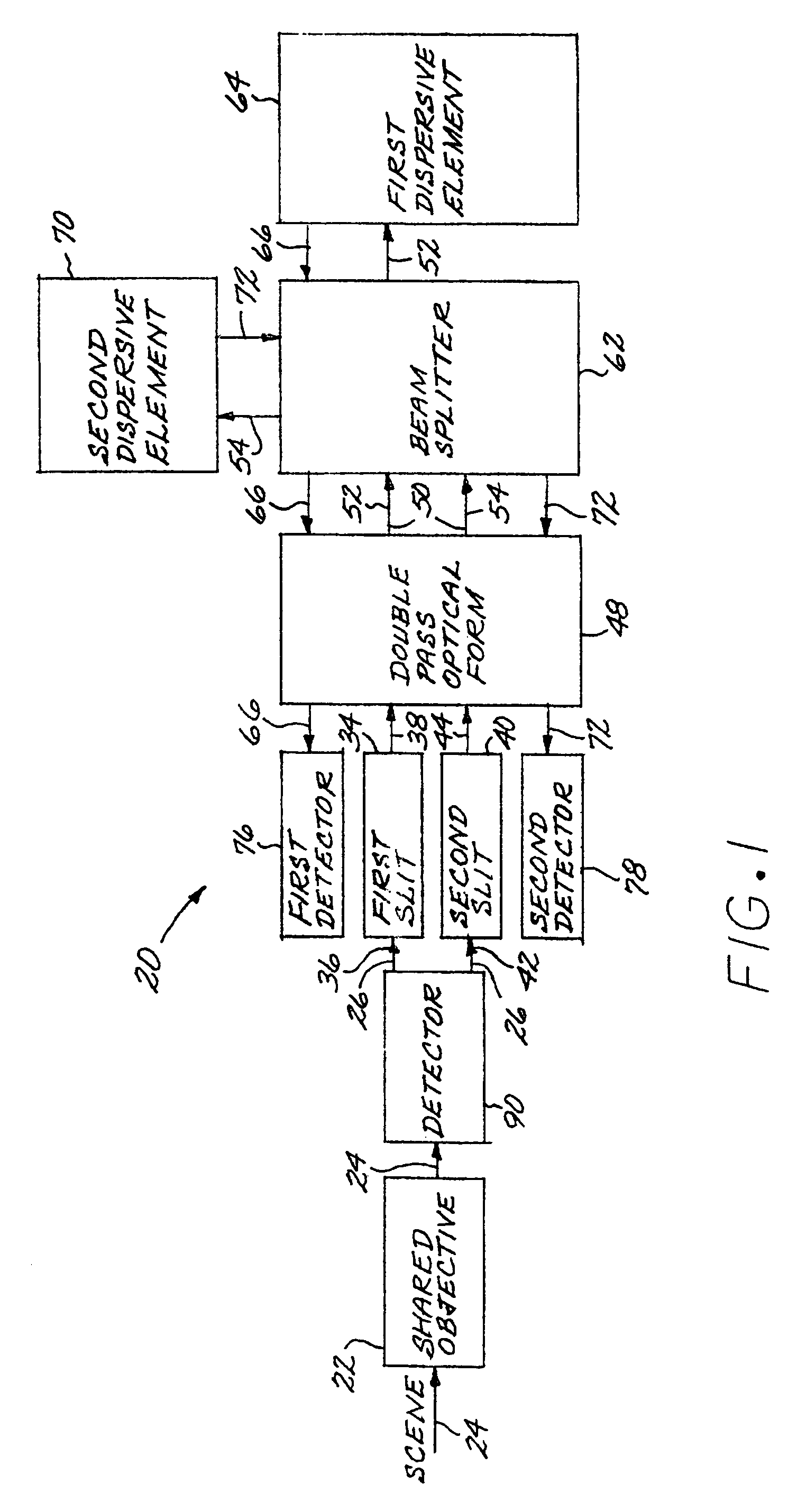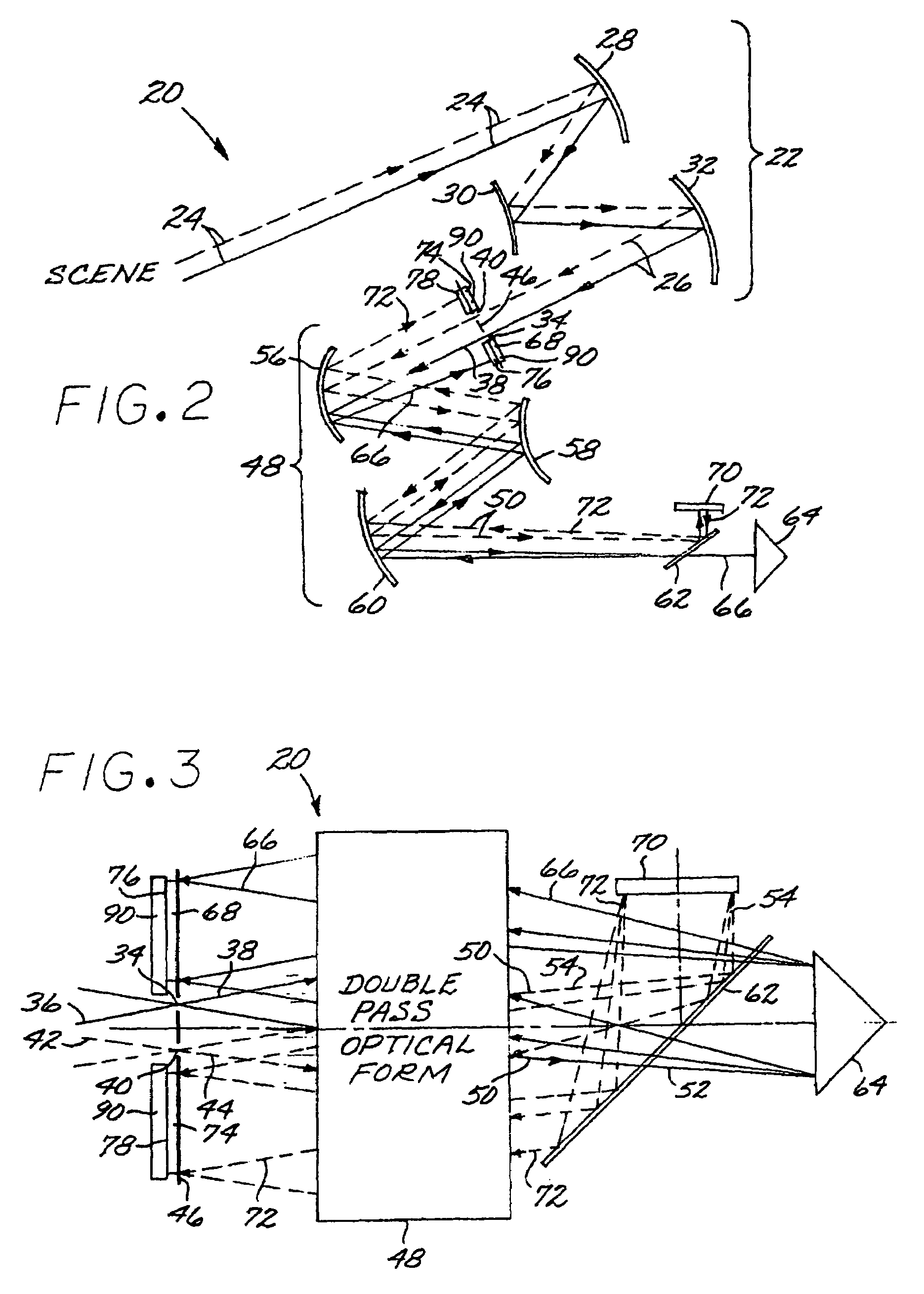Two-channel imaging spectrometer utilizing shared objective, collimating, and imaging optics
a technology of imaging spectrometer and shared objective, which is applied in the direction of optical radiation measurement, instruments, spectrometry/spectrophotometry/monochromator, etc., can solve the problems of limitations of existing designs on the wavelengths that may be analysed, and the design of imaging spectrometers that do not permit hyperspectral imaging in two different disjoints, so as to reduce the size, weight, and cost of the two-channel spectrometer
- Summary
- Abstract
- Description
- Claims
- Application Information
AI Technical Summary
Benefits of technology
Problems solved by technology
Method used
Image
Examples
Embodiment Construction
[0018]FIGS. 1-4 depict a preferred embodiment of a two-channel spectrometer 20. The two-channel spectrometer 20 includes a shared objective 22 having an input 24 from a scene being viewed, and an output beam 26. As used herein, “shared” means that the single element or optical module is utilized by both of the two channels or wavelength ranges. That is, there is a single objective 22 used by light of both wavelength ranges, and not a separate objective for each wavelength range. The shared objective 22 may be of any operable form, but it is strongly preferred that the shared objective 22 be an all-reflective objective, made solely of mirrors and with no lenses. The index of refraction of a lens is dependent upon the wavelength of the light being refracted, and the effect on performance in the present circumstances would be unacceptable in most cases. Thus, the objective 22 is preferably made only of mirrors.
[0019]FIG. 2 illustrates a preferred form of the shared all-reflective objec...
PUM
 Login to View More
Login to View More Abstract
Description
Claims
Application Information
 Login to View More
Login to View More - R&D
- Intellectual Property
- Life Sciences
- Materials
- Tech Scout
- Unparalleled Data Quality
- Higher Quality Content
- 60% Fewer Hallucinations
Browse by: Latest US Patents, China's latest patents, Technical Efficacy Thesaurus, Application Domain, Technology Topic, Popular Technical Reports.
© 2025 PatSnap. All rights reserved.Legal|Privacy policy|Modern Slavery Act Transparency Statement|Sitemap|About US| Contact US: help@patsnap.com



